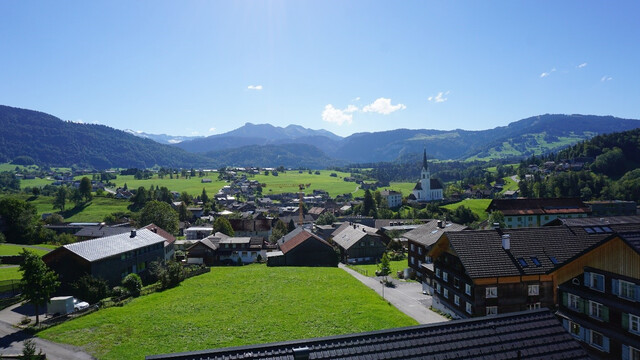Rainy Summer Ideal for Mushroom Growth

This year's rainy summer may not have been ideal for outdoor sports enthusiasts, but mushroom gatherers have reason to rejoice. The alternating wet and hot days have caused chanterelles, porcini mushrooms, and parasol mushrooms to sprout from the ground in parts of Austria. Particularly in Lower Austria, Carinthia, and Salzburg, one would have good chances of finding mushrooms while collecting, explained the president of the Austrian Mycological Society, Irmgard Greilhuber.
Anyone wishing to go collecting must bear in mind that only a maximum of two kilograms per day and person is allowed for personal use. The expert also recommends learning to recognize the characteristics of poisonous mushroom species before collecting. For some poisonous mushroom species, such as the death cap, consuming just one fruiting body can be fatal.
Extended Mushroom Season
For mushrooms to grow, they need alternating periods of rain and warm phases. If it rains, it must be at least 40 liters per square meter to promote growth, and the soil must not be too dry, as it would otherwise not be able to absorb the water, according to Greilhuber. According to the expert, the mushroom season has extended in recent years, which is attributed to climate change. Due to milder winters, the season starts earlier in the year, and the end is also pushed further back, as frost occurs later in the fall. Additionally, autumn mushroom species are sprouting much earlier from the ground.
In mycology (mushroom research, note), a distinction is made between lower fungi, such as molds, and higher fungi, which include all large mushrooms. The higher fungi are easily recognizable with the naked eye. In Austria, there are over 4,500 species of large mushrooms, of which around 200 species are edible mushrooms. Only 20 species are truly poisonous, some even deadly - these include the brick-red webcap, the orange-brown webcap, the deadly galerina, or the death caps. Half a fruiting body of the death cap, for example, is enough to cause devastating liver damage, and a whole one can even lead to death, according to Greilhuber.
The fruiting body of the mushroom, which can be found in forests, is only a small part of the organism. The actual living being, which is neither plant nor animal, is called mycelium. Mycelia can extend over large areas and are a network of fine fungal threads (so-called hyphae, note) that grow in the soil or wood. According to Greilhuber, the fruiting body can only develop if the mycelium is active and doing well.
Restriction Present
For those who want to go mushroom picking, expert Greilhuber advises not only learning the characteristics of poisonous species but also exercising restraint. Picking should be done in moderation, and one should be aware that mushrooms have a special significance in the ecosystem, as they are among the most important decomposers of organic material and contribute to the growth of trees. In a 2018 release from the agricultural and forestry operations, it was recommended to cut the mushrooms rather than pull them out, clean them roughly, and leave the remnants in the forest, as this can lead to the formation of new mycelia.
In Austria, according to the Forestry Act, it is not permitted to collect more than two kilograms per day per person for personal use. Additionally, each federal state has its own nature conservation law, which may include changes such as special protection for certain species or collection bans in certain areas. Participation in or organization of organized collecting, such as mushroom or berry picking events, is also prohibited. Mushroom hunting in certain regions can also be banned by the respective forest owner, as mushrooms, along with berries, herbs, and other wild fruits, are the property of the landowner.
Mushroom Poisoning Possible
According to the expert, about two-thirds of all mushroom poisonings are due to the consumption of spoiled mushrooms. When collecting, care must be taken to ensure that the mushrooms are still crisp and fresh - the nose can also help in identification. Signs that a spoiled or poisonous mushroom has been consumed can include stomach pain, nausea, vomiting, diarrhea, or sweating, as the Johanniter once announced.
There are no home remedies for mushroom poisoning; only a doctor can really provide help. In case of suspected poisoning, depending on the condition, a hospital should be visited or emergency services should be alerted, according to the release. Additionally, mushroom or food remnants should be taken to the doctor, as they can help in identifying the poison.
(APA/Red)
This article has been automatically translated, read the original article here.
Du hast einen Hinweis für uns? Oder einen Insider-Tipp, was bei dir in der Gegend gerade passiert? Dann melde dich bei uns, damit wir darüber berichten können.
Wir gehen allen Hinweisen nach, die wir erhalten. Und damit wir schon einen Vorgeschmack und einen guten Überblick bekommen, freuen wir uns über Fotos, Videos oder Texte. Einfach das Formular unten ausfüllen und schon landet dein Tipp bei uns in der Redaktion.
Alternativ kannst du uns direkt über WhatsApp kontaktieren: Zum WhatsApp Chat
Herzlichen Dank für deine Zusendung.








